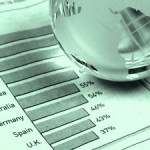
Brussels – The European Commission on March 28 adopted a comprehensive strategy – Transport 2050 – for a competitive transport system that will increase mobility, remove major barriers in key areas, and fuel growth and employment. At the same time, the proposals will dramatically reduce Europe’s dependence on imported oil and cut carbon emissions in transport by 60% by 2050.
To achieve this will require a transformation in Europe’s current transport system. By 2050, key goals will include:
- No more conventionally-fueled cars in cities.
- 40% use of sustainable low carbon fuels in aviation; at least 40% cut in shipping emissions.
- A 50% shift of medium distance intercity passenger and freight journeys from road to rail and waterborne transport.
- All of which will contribute to a 60% cut in transport emissions by the middle of the century.
Vice-President Siim Kallas, responsible for transport, said, “Transport 2050 is a roadmap for a competitive transport sector that increases mobility and cuts emissions. We can and we must do both. The widely held belief that you need to cut mobility to fight climate change is simply not true. Competitive transport systems are vital for Europe’s ability to compete in the world, for economic growth, job creation and for peoples’ everyday quality of life. Curbing mobility is not an option; neither is business-as-usual. We can break the transport system’s dependence on oil without sacrificing its efficiency and compromising mobility. It can be win–win.”
The Transport 2050 Roadmap to a Single European Transport Area sets out to remove major barriers and bottle-necks in many key areas across the fields of: transport infrastructure and investment, innovation, and the internal market. The aim is to create a Single European Transport Area with more competition and a fully integrated transport network which links the different modes and allows for a profound shift in transport patterns for passengers and freight. To this purpose, the roadmap puts forward 40 concrete initiatives for the next decade.
The Transport 2050 roadmap sets different goals for different types of journey – within cities, between cities, and long distance.
1. For intercity travel, 50% of all medium-distance passenger and freight transport should shift off the roads and onto rail and waterborne transport.
- By 2050, the majority of medium-distance passenger transport, about 300 km and beyond, should go by rail.
- By 2030, 30% of road freight over 300 km should shift to other modes such as rail or waterborne transport, and more than 50% by 2050.
- Deliver a fully functional and EU-wide core network of transport corridors, ensuring facilities for efficient transfer between transport modes (TEN-T core network) by 2030, with a high-quality high-capacity network by 2050 and a corresponding set of information services.
- By 2050, connect all core network airports to the rail network, preferably high-speed; ensure that all core seaports are sufficiently connected to the rail freight and, where possible, inland waterway system.
- By 2020, establish the framework for a European multi-modal transport information, management and payment system, both for passengers and freight.
- Move towards full application of “user pays” and “polluter pays” principles and private sector engagement to eliminate distortions, generate revenues and ensure financing for future transport investments.
2. For long-distance travel and inter-continental freight, air travel and ships will continue to dominate. New engines, fuels and traffic management systems will increase efficiency and reduce emissions.
- Low-carbon fuels in aviation to reach 40% by 2050; also, by 2050, reduce EU CO2 emissions from maritime bunker fuels by 40%.
- A complete modernization of Europe’s air traffic control system by 2020, delivering the Single European Sky: shorter and safer air journeys and more capacity. Completion of the European Common Aviation Area of 58 countries and 1 billion inhabitants by 2020.
- Deployment of intelligent land and waterborne transport management systems (e.g., ERTMS, ITS, RIS, SafeSeaNet and LRIT [1]).
- Work with international partners and in international organizations such as ICAO and IMO to promote European competitiveness and climate goals at a global level.
3. For urban transport, a big shift to cleaner cars and cleaner fuels. 50% shift away from conventionally fuelled cars by 2030, phasing them out in cities by 2050.
- Halve the use of ‘conventionally fueled’ cars in urban transport by 2030; phase them out in cities by 2050; achieve essentially CO2-free movement of goods in major urban centres by 2030.
- By 2050, move close to zero fatalities in road transport. In line with this goal, the EU aims at halving road casualties by 2020. Make sure that the EU is a world leader in safety and security of transport in aviation, rail and maritime.
Check the following link to know more about Transport 2050 Roadmap to a Single European Transport Area:
http://ec.europa.eu/transport/strategies/2011_white_paper_en.htm
Notes:
[1] European Rail Traffic Management System (ERTMS), Intelligent Transport Systems (ITS) – for road transport, River Information Services (RIS), the EU’s maritime information systems SafeSeaNet and Long Range Identification and Tracking (LRIT) of vessels.
Source: Europa Press Release dated March 28, 2011.
(Photo: Press Conference held on March 28 by Siim Kallas, Vice President of the EC in charge of Transport on the White Paper on the future of transport. Photo Credit: Europa)














